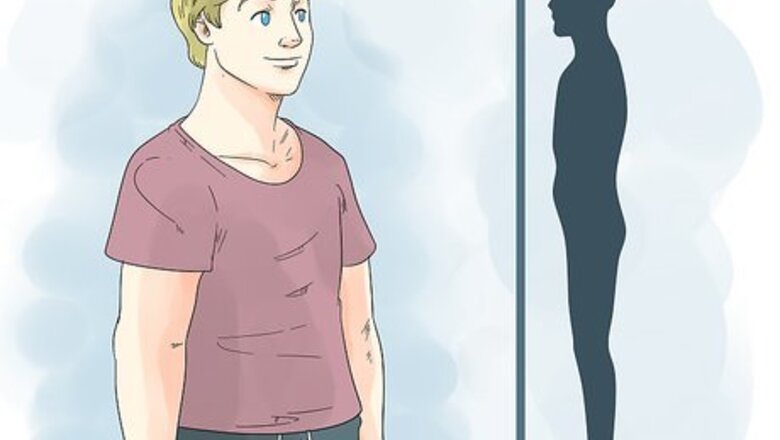
views
Using a Proper Gait
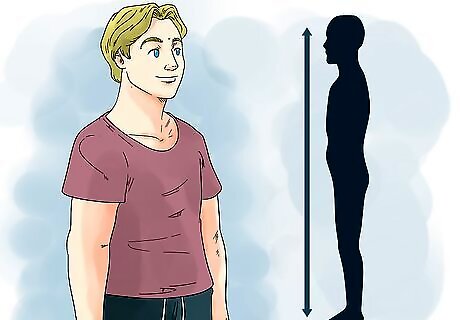
Maintain good posture while you walk. Your posture can change your gait, so try to stand tall while you’re walking around barefoot. Straighten your spine, roll your shoulders back, and engage your core as you walk. Additionally, look forward to check your terrain rather than looking down. You might be tempted to look down so you don’t accidentally step on something. Instead of looking where your next step will be, look a few feet ahead of you. This way you can watch where you’re going without altering your posture.
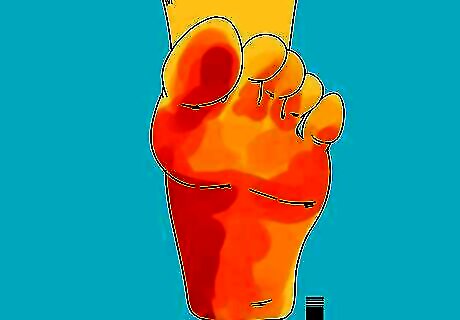
Put your heel down on the ground first when you take a step. Over time, wearing shoes may have altered your natural gait, so it’s important to make sure you’re putting your heel down first. Land each step on the center of the back of your heel. This keeps your walking gait smooth rather than heavy. Your gait may automatically be more natural when you’re going barefoot since your feet can feel the ground.
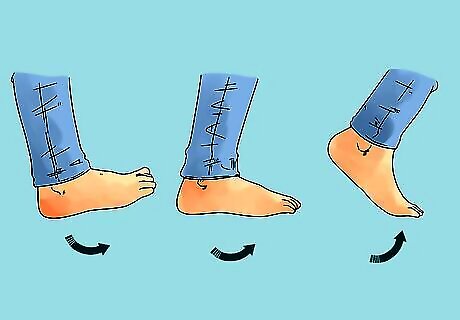
Roll your foot down onto the ground from heel to toe. Once your heel lands on the ground, lower the rest of your foot. Bring your heel down first, followed by your arch, the ball of your feet, and your toes. This should help evenly distribute your weight across your foot, which might help prevent foot pain and injuries.
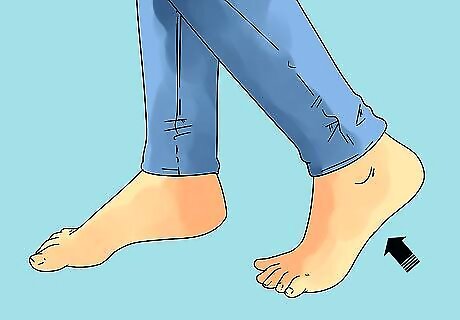
Lift your foot back off the ground after all of your toes have landed. Each step should flow smoothly from heel to toe. As your toes land on the ground, hinge at your toes to lift the back of your foot off the ground. Then, pick up your leg.Warning: Going barefoot might cause calluses on your feet. Calluses are a build-up of skin, which becomes hard. Over time, calluses can become painful.
Going Barefoot Safely
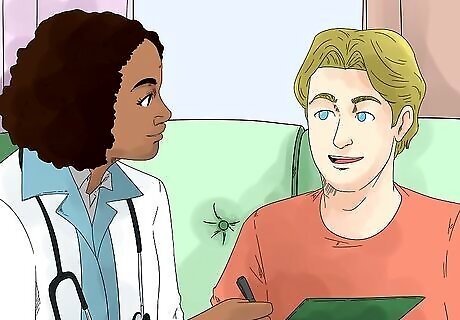
Check with a doctor before going barefoot. You may want to go barefoot to help your feet heal, as some people believe shoes are harmful to feet. However, foot conditions like plantar fasciitis or metatarsalgia may get worse if you go barefoot. Additionally, it might not be safe to go barefoot if you have diabetes. To be on the safe side, ask your healthcare provider if it’s okay to walk around barefoot. The doctor might recommend you wear supportive, cushioned shoes until your feet feel better. Tell your doctor why you want to go barefoot. They may be able to give you advice on the best way to help with your needs.Warning: It’s generally not a good idea to go barefoot if you have diabetes, as you might not be able to feel injuries in your feet. Additionally, your feet might not heal as easily from an injury. Talk to your doctor before you try going barefoot.
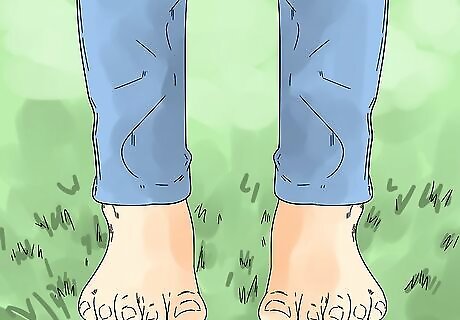
Walk on a soft surface that’s less likely to hurt your feet. Grass and soil are both a great option if you’re walking outdoors. You might also try an all-weather running track. If you’re walking inside, stay on carpeted areas or rugs. If your feet start to hurt, you might try a softer terrain. For instance, hard packed soil may hurt your feet, so you might stick to grass.
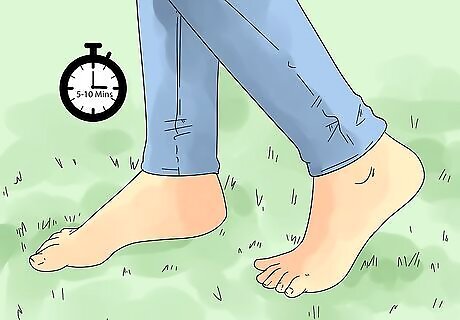
Start with a few minutes of barefoot walking a day to reduce injury risk. Even though walking barefoot may provide benefits to some people, it usually takes time for your feet to get used to it. Since your feet are used to shoes, going barefoot might stress them. Stick to short walks at first. For instance, you might start with a 5-10 minute barefoot walk.
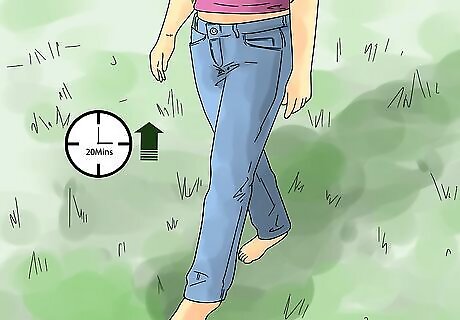
Increase the length of your barefoot walks slowly to let your feet adjust. Your feet will likely get used to going barefoot over time. When you feel comfortable walking barefoot, add another 5-10 minutes to your walks. If your feet start to hurt, shorten your walks so your feet don’t feel stressed. As an example, you might stick to a 10-minute daily walk for 2-4 weeks. Then, you might increase to a 20-minute walk. Once a 20-minute walk feels easy, you might walk for 30 minutes a day.
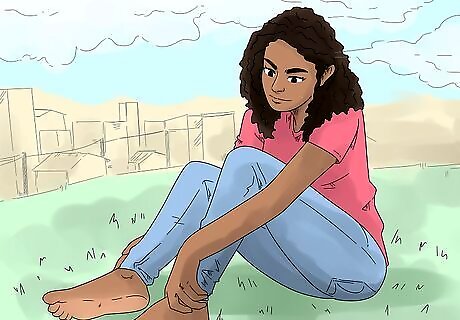
Stop if you feel any pain in your feet. While some people swear by going barefoot, it’s not right for everyone. Walking around barefoot can cause or worsen a foot injury, and you might just need support from shoes. Rest if your feet start to hurt during a barefoot walk, and consider going back to shoes if you have persistent discomfort. See your doctor if your foot might be injured.
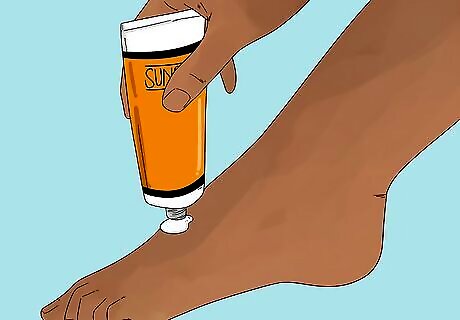
Wear sunscreen on both sides of your feet for sun protection. When you’re walking outdoors, your feet are exposed to the UV rays from sunlight. However, it’s easy to forget about your feet when you’re applying sunscreen. Make sure you apply sunscreen to both the top and bottom of your feet so they’re protected from harmful UV rays. Both a spray sunscreen and a lotion will work. You might prefer a spray so it’s not slippery.
Staying Safe Outdoors
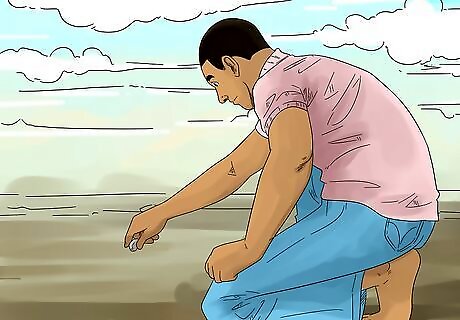
Check the ground for objects that might harm you. You probably try to avoid stepping on hard or pointy objects even when you’re wearing shoes, but it’s extra important to watch out if you’re not wearing shoes. Items like glass or rocks may cut or bruise your feet if you step on them, so always look where you’re stepping. Additionally, avoid areas that commonly have debris that you might step on. For instance, you might not want to walk along a trail that has a lot of rocks and pebbles.
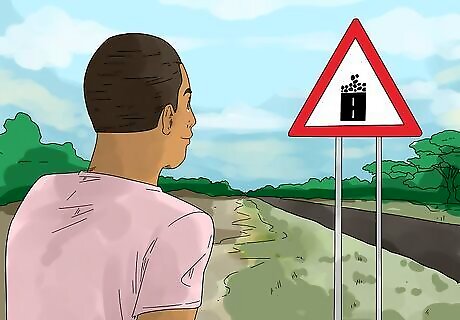
Use caution if the terrain is wet or rough. It’s easy to slip on wet terrain, and you may not be able to see what’s under standing water. Additionally, rough terrain might scratch up your feet or could trip you. Check the land where you’re going to walk carefully so you don’t accidentally get hurt. As an example, you might not walk outside right after a storm or along a riverbank. Similarly, you might decide to wear shoes if you’re walking on a rocky surface.
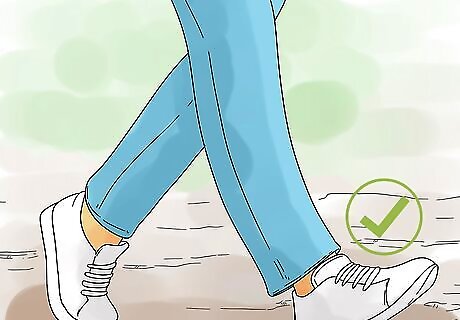
Wear shoes if the ground feels very hot or very cold. Extreme weather conditions can make the ground temperature uncomfortable or even dangerous. You may burn the soles of your feet on a hot ground or get an ice burn on very cold ground. Check the temperature before you go out and consider wearing shoes if the ground may be hot or cold. Don’t walk outside if the conditions are good that day. Instead, choose an area that’s indoors.
Getting Benefits from Barefoot Walking
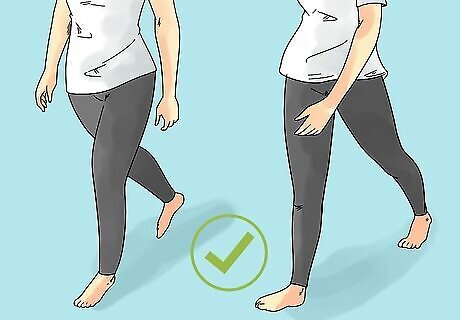
Try going barefoot to improve your natural gait. Walking barefoot could improve your gait since it allows your feet to feel the ground. If your gait is more natural, it’s possible you might feel better. However, this isn’t true for everyone, and some people still have a natural gait with shoes. Incorporate barefoot walking into your day, and see if it helps your gait. Be mindful of how you’re walking barefoot to make sure you’re doing it correctly. Otherwise, you might not get the results you want.
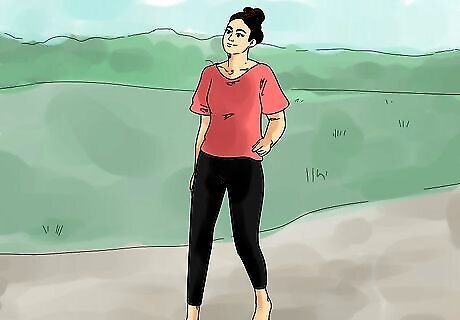
Walk barefoot outside to possibly reduce your stress levels. Studies show that exposing your bare skin to the ground may reduce your levels of cortisol. Since cortisol is a stress hormone, this might mean you’ll feel less stressed and more relaxed and upbeat after going barefoot outside. Try walking around barefoot to see if it helps you feel better. Track your moods both before and after a walk, as well as on days you don’t do a barefoot walk. For instance, you might walk or stand outside for at least 10 minutes each day. This is called “earthing,” and some studies suggest it might work for some people.
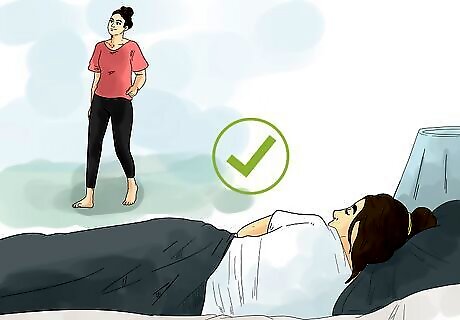
Go barefoot outdoors to potentially improve your sleep. Like with stress, it’s possible that going barefoot outdoors may help you sleep better at night. However, results can vary from person-to-person, so there’s no guarantee it’ll work for you. If you want to sleep better, spend a few minutes barefoot outside every day to see if it helps you. There’s not a specific amount of time you need to spend barefoot outside. You might start with 5-10 minutes and see if that helps you.















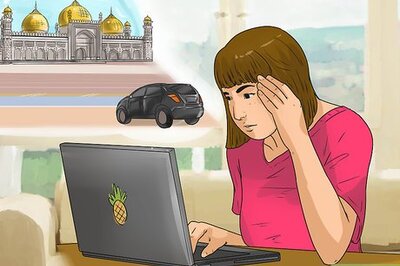

Comments
0 comment